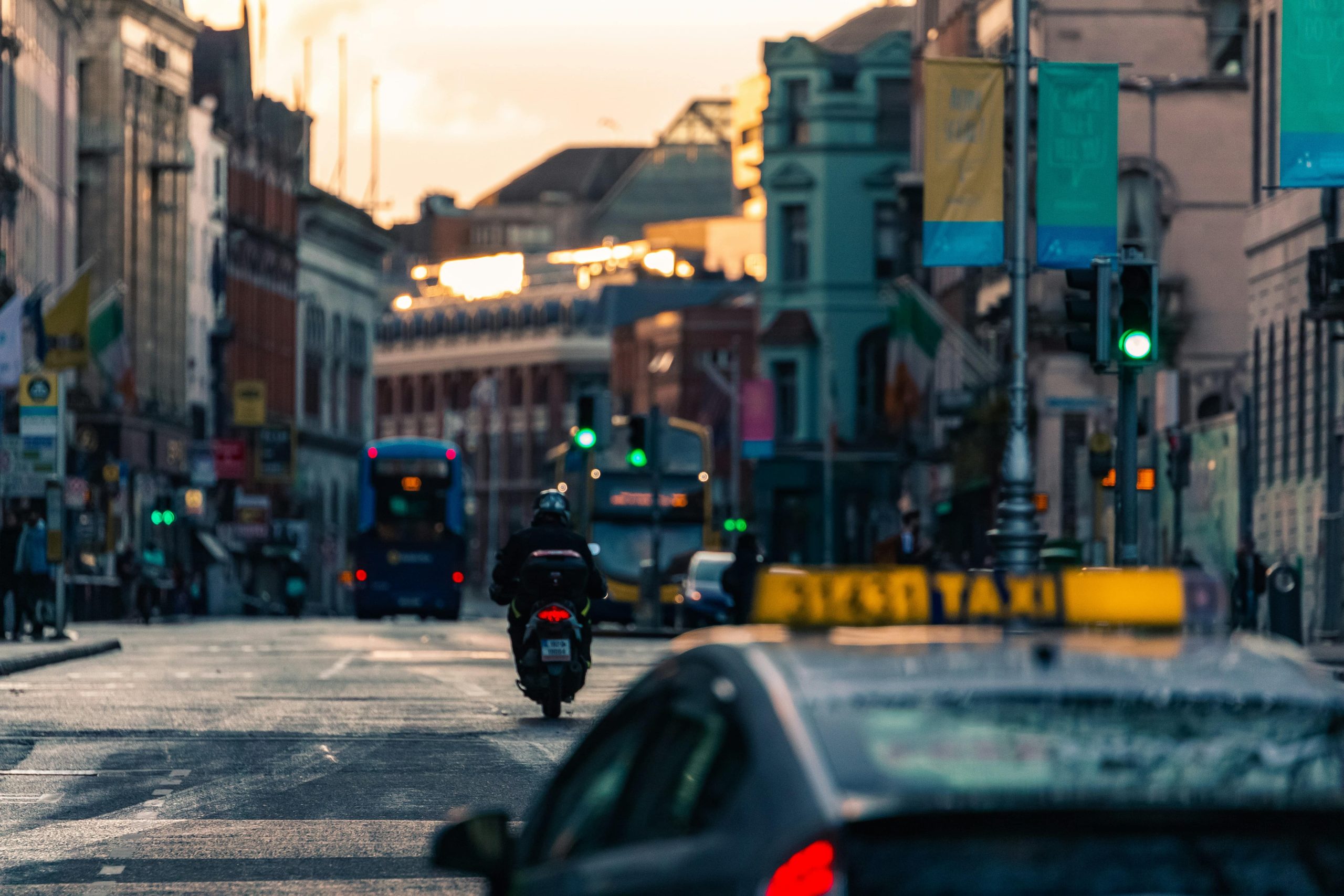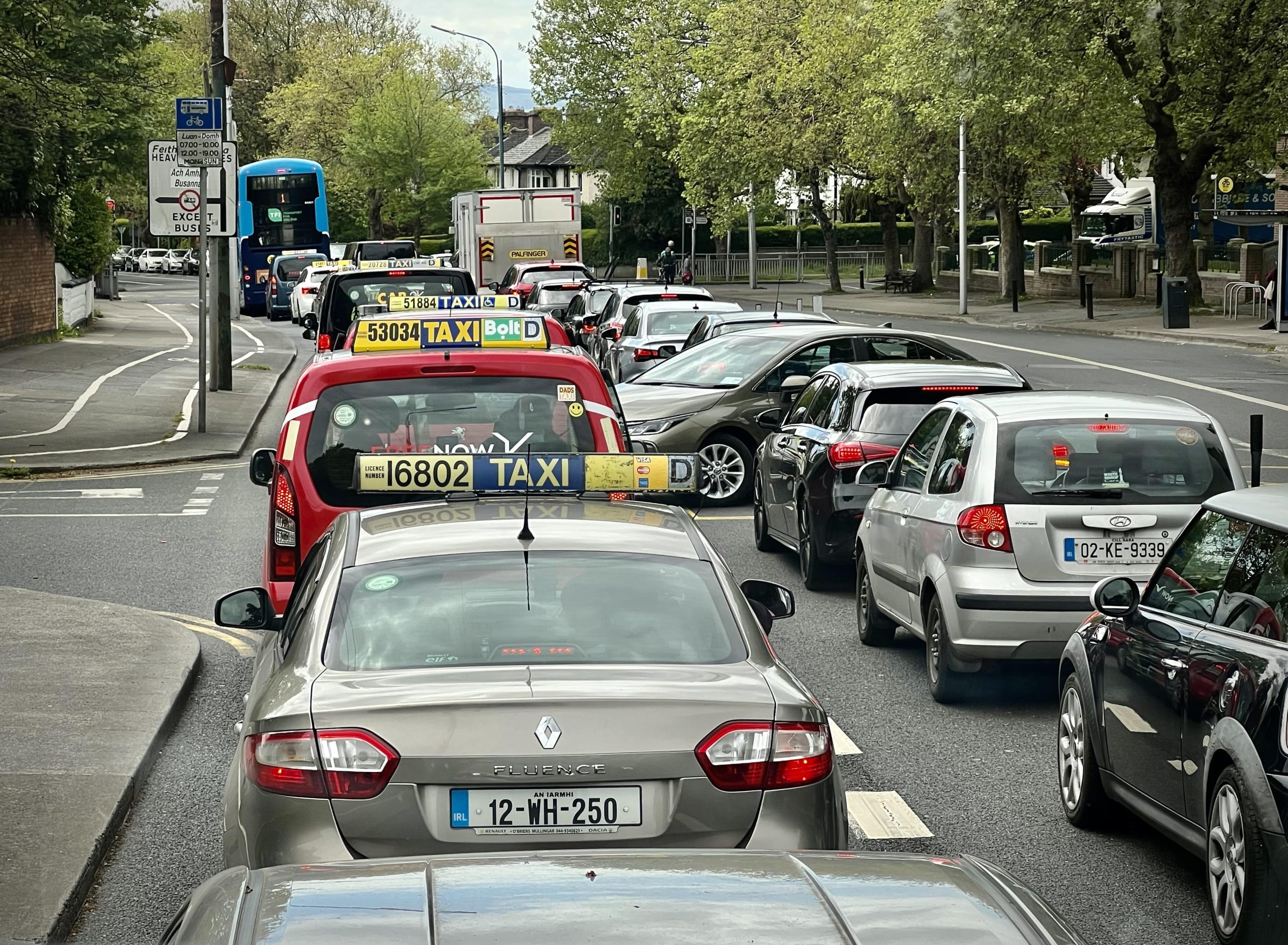Bye bye cars! Dublin car ban in the city

Billboard
Skyscrapper
Halfpage
Busy traffic has long been the norm in the Irish capital. But from August 2024, this is going to change: Dublin’s car ban will be effective, clearing traffic and the air in city centre.
Dublin is planning a ban on private cars and delivery vehicles, according to Irish Transport Minister Eamon Ryan (Green Party). He announced this plan at the launch of a €209 million fund for walking and cycling infrastructure. This comes after studies have shown that most vehicles – up to two thirds – are only passing through Dublin’s city centre, rather than arriving there. The new Transport Plan will limit sections of the North and South Quays to public transport by restricting the streets accessible to private vehicles. This will make the Irish capital much safer for pedestrians and cyclists, starting August 2024.
Dublin’s “active travel” fund will provide the financial support for the traffic calming measures and for the Dublin car ban in certain areas of the city. For example, half a million Euros will be dedicated to a traffic free plaza at College Green. Parliament Street will also be completely pedestrianised. With this car ban, Dublin is following other European cities like Paris and London. Minister Ryan hopes for more cycling in the capital, but also other cities and towns in the country.
Currently, cycling in Dublin is not particularly safe. And while walking is not dangerous, it can be very difficult given that cars often have preference in Dublin’s city centre. Minister Ryan is hoping for a “tipping point where we will see is massive change in cycling and walking as a mainstream form of transport for our city”. Similarly, Junior transport minister Jack Chambers expressed his hopes for a more active society, particularly by shaping local plans around schools and communities towards walking and cycling.
From August 2024, the Dublin car ban will be effective, prohibiting private cars and commercial vehicles to enter much of the city centre. Routes to businesses and car parks will be retained. The government has been clear in communicating the goal of putting a stop to the use of city centre as a thoroughfare. The goal is not to completely prevent individual cars and delivery vehicles from entering city centre, but to end the dominance of cars in Dublin. Public submissions show more than 80 per cent support for the measures.

Overall, Dublin, a city not known for its progressive urban policy, has received little backlash when announcing the Dublin car ban. The support rate of 80 per cent is unheard of, especially when comparing it to the motorist backlash in the UK. When London’s mayor announced the expansion of the capital’s Ultra-Low Emission Zone, a cultural war of sorts broke out in 2023.
The level of support for the Dublin car ban probably comes from the urgent need to make the capital greener and more liveable. The city centre is still recovering from the pandemic and could do with a boost to its overall attractiveness. The riverside could be much more liveable, but is dominated by through-traffic. And the ancient street layout of the cities with its many cul-de-sacs is not only difficult for traffic, but also enables crime. More pedestrians would hopefully contribute to higher safety and vibrancy in city centre.
However, the car ban in city centre will not necessarily help with Dublin’s car dependency. Through-traffic will be replaced to other streets, some of them running through residential areas. For 2024, the modal share of cars in the city will still be 42 per cent, much higher than in Amsterdam, Brussels, or London.

Drastically reducing through traffic as well as delivery traffic in Dublin’s city centre will also require some innovation in offering alternatives. For example, the city government already has ideas around shared delivery and the activation of space for pedestrians to avoid antisocial behaviour. Two new “bus gates” will be located around north and south quays, stopping private traffic from travelling into city centre and simultaneously offering an alternative. Main streets such as Pearse Street will see a reduction in traffic lanes and the introduction of two-way cycle lanes.
Overall, the Statewide Active Travel Investment Programme for 2024 will fund around 800 new and existing projects to support the Dublin car ban. These include street cycle routes, pedestrian promenades, a sustainable transport bridge, and a one-way active travel scheme in Donegal Town. The process to replan central streets is already underway in Dublin.
The goal is clear: Reducing traffic by 60 per cent in city centre. Only those private cars and commercial vehicles that have city centre as their destination will be allowed access. This should also result in drastically improved air quality. Dublin’s planners are hoping to create a 15-minute city, allowing residents of Dublin’s centre to access all important destinations within a 15-minute walk or bike ride.












